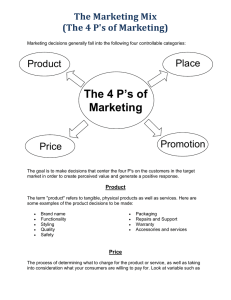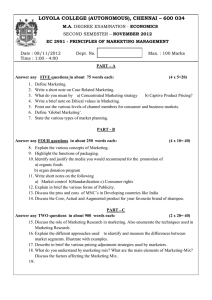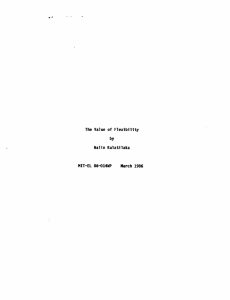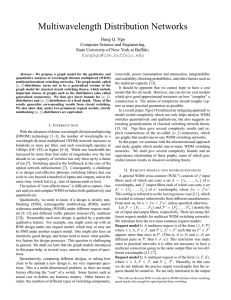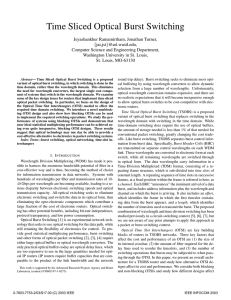The Information Economy Summary 1
advertisement
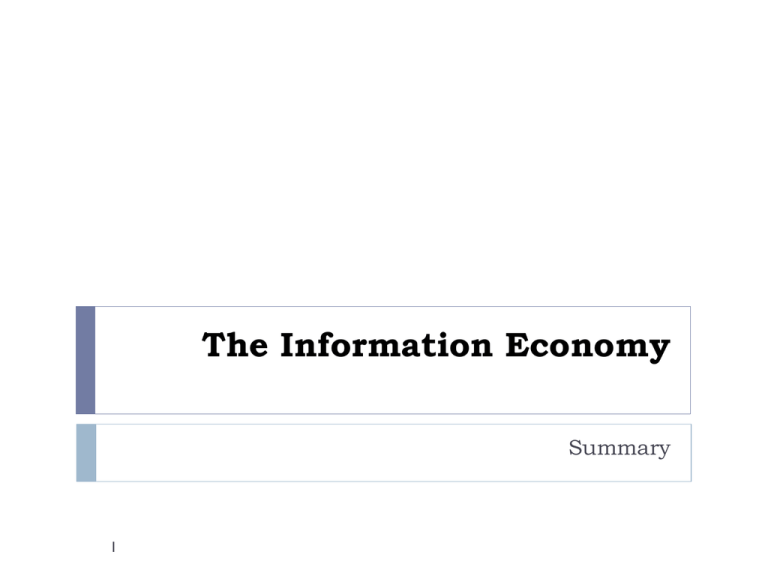
The Information Economy Summary 1 Strategy 101 Value pie Value of industry = buyers’ values minus total costs Firm’s value = value of industry × firm’s share of pie Six forces Substitutes, rivals, entrants, suppliers, buyers, complements Market definition What is relevant for the question you are asking? Coherent strategies 2 Choices that complement each other. Information Goods What’s special about information goods? High fixed, low marginal costs. Market type 1: differentiated goods Horizontal differentiation Vertical differentiation Market type 2: dominant firm First mover advantage Technological or cost advantage Other aspects of information goods 3 Long tail, customizability, user created content, experimentation and adaptation, market design. How to Price Basic rule: Monopoly formula from Econ 101. Price discrimination Third degree (group pricing) Second degree (indirect discrimination, versioning) Bundling Reduces dispersion of consumers WTP Zero prices 4 Avoid transactions cost, anonymity, psychology Switching Costs and Lock-in Switching costs matter Determine firm’s profits [valuation principle] Determine how much it costs to win a customer Switching costs come from Investments in complementary assets (training, durable goods) Contracts, loyalty programs, transactions costs. Seller’s strategy Invest in base – penetration pricing, influential customers. Encourage entrenchment – loyalty programs, staggered sales Leverage base – prices, complementary products Buyer’s strategy 5 Introductory discount, dual sourcing, information, bonds Networks Network externality Agents’ values depend on the number (and identity) of users. Equilibrium Fulfilled expectations demand is hump shaped. Given a price, there are multiple equilibria. Monopoly pricing – network effect boosts marginal revenue. Overcoming inertia Mobilization - introductory discounts, focused networks Collective switching costs – coordinate switching Open (fight within market) vs. closed (fight for market) Closed – penetration pricing, develop complements Open – sell enhancements, sell complements Compatibility choice (backwards, forwards, neither) 6 Platforms Platform brings together groups of users Same-side and cross-side network effects Pricing Subsidize those who create value for others Flexibility in details of fee structure Competitive strategy Competing in winner take all market, avoiding envelopment Mobilization 7 Subsidizing one side Start as vendor or merchant and transition




